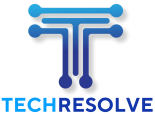As businesses strive to remain competitive and agile in the ever-evolving digital landscape, the traditional model of owning and managing IT hardware has evolved. Enter IT Hardware as a Service (HaaS), a game-changing approach that allows businesses to leverage the benefits of cutting-edge technology without the upfront costs and hassles of ownership. In this article, we will explore the concept of HaaS and delve into its advantages for businesses of all sizes.
What is IT Hardware as a Service (HaaS)? IT Hardware as a Service, also known as Hardware on Subscription, is a service-based model that provides businesses with access to essential IT infrastructure, including servers, storage devices, networking equipment, and more, on a subscription basis. Rather than investing capital upfront to purchase and maintain hardware, organizations can lease or rent the equipment from a trusted service provider.
Advantages of IT Hardware as a Service:
- Cost Savings: One of the primary advantages of HaaS is the significant cost savings it offers. Instead of making large upfront investments in hardware procurement, businesses can spread the costs over a fixed monthly fee, aligning expenses with budgetary requirements. This cost-effective approach allows organizations to redirect capital towards core business activities, improving cash flow and overall financial flexibility.
- Scalability and Flexibility: In a dynamic business environment, scalability is crucial. HaaS enables businesses to scale their IT infrastructure rapidly and efficiently. As companies grow or experience fluctuations in demand, they can easily upgrade or downgrade their hardware requirements without the burden of disposing of outdated equipment or investing in new resources. HaaS offers the flexibility to adapt IT infrastructure to changing business needs, ensuring optimal performance and minimizing downtime.
- Improved Technology Access: HaaS allows businesses to leverage the latest and most advanced technology solutions without the need for frequent hardware upgrades. Service providers are responsible for ensuring that the leased hardware is up-to-date and in optimal working condition. This ensures that organizations have access to cutting-edge technology, enhancing productivity and competitive advantage.
- Enhanced Maintenance and Support: With HaaS, organizations no longer need to worry about hardware maintenance, repairs, or firmware updates. Service providers assume responsibility for managing and maintaining the leased equipment, including regular upgrades and patches. This allows internal IT teams to focus on strategic initiatives and core business functions, rather than being burdened by hardware-related tasks.
- Reduced Obsolescence Risk: Technology evolves at a rapid pace, rendering hardware obsolete within a few years. By adopting HaaS, businesses can avoid the risks associated with owning outdated equipment. The service provider takes on the responsibility of replacing obsolete hardware, ensuring that organizations have access to modern and efficient technology, reducing the risk of technological stagnation.
IT Hardware as a Service (HaaS) is revolutionizing the way businesses approach their IT infrastructure needs. By adopting this service-based model, organizations can enjoy cost savings, scalability, improved technology access, enhanced maintenance and support, and reduced obsolescence risk. HaaS allows businesses to focus on their core competencies while leveraging cutting-edge technology solutions that drive efficiency and innovation. Embrace the benefits of IT Hardware as a Service and unlock new levels of flexibility, agility, and competitiveness in today’s digital era.
